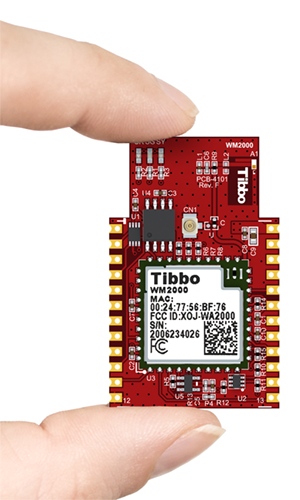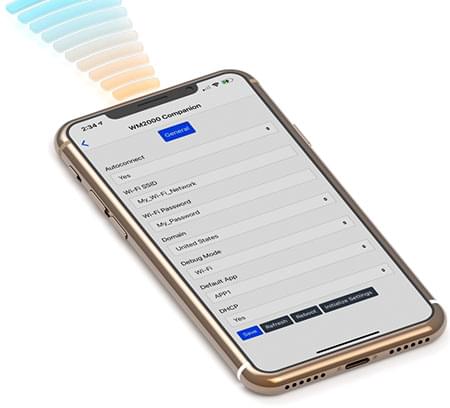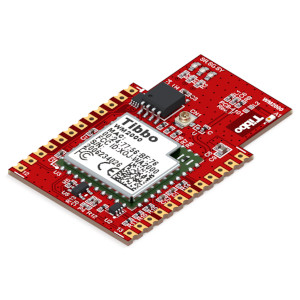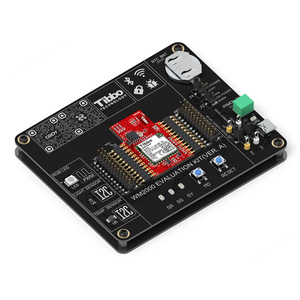The WM2000 is the first programmable wireless Industrial IoT (IIoT) module offered by Tibbo.
This cloud-native device incorporates Wi-Fi (802.11a/b/g/n over 2.4GHz/5GHz) and Bluetooth Low Energy (BLE) interfaces that introduce several new features, such as Wi-Fi auto-connects, wireless debugging,
over-the-air (OTA) updates, and TLS support.
As a vendor-agnostic product, it can communicate with Microsoft Azure, Google Cloud, Amazon AWS, and virtually any other cloud services provider.
The WM2000's hardware incorporates two high-speed serial ports. It also features software I²C/SPI ports, onboard flash and EEPROM, a real-time clock, and ten GPIO lines — two of which work as external interrupts. Nine lines can be configured to provide pulse-width modulation (PWM) output.
The WM2000 is fully supported by Tibbo IDE (TIDE) and has a dedicated platform that covers all of the module's hardware facilities. The module runs Tibbo OS (TiOS), our highly reliable operating system that achieves exceptional stability thanks to radical OS structure simplification, static memory allocation, full ownership, and meticulous curation of the code base, as well as complete sandboxing of the user's application.
The WM2000 is ideal for creating IIoT solutions that are free from the limitations of traditional wired networks. The simplicity of Tibbo BASIC/C — aided by TIDE — ensures timely and cost-effective development of stable, dependable applications.
To test and evaluate the module's capabilities, purchase our WM2000EV Kit.










